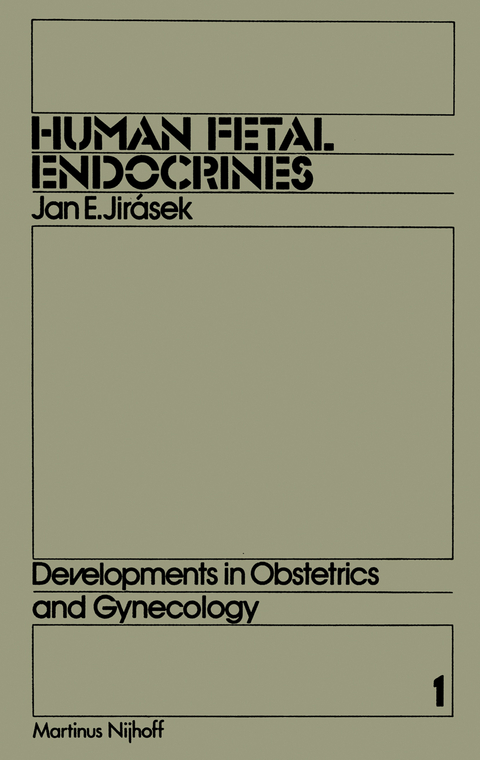
Human Fetal Endocrines
Seiten
2013
|
Softcover reprint of the original 1st ed. 1980
Springer (Verlag)
978-94-009-8194-2 (ISBN)
Springer (Verlag)
978-94-009-8194-2 (ISBN)
The study of prenatal development provides many clues for understanding the physiology as well as the pathogeny of malformations and many diseases. I learned that the development of a structure is, under normal circumstances, strictly determined and that the development of structures always precedes their proper function.
The study of prenatal development provides many clues for understanding the physiology as well as the pathogeny of malformations and many diseases. I became interested in the analysis of human development as a young medical student more than 30 years ago, and I have stayed in this field all my life. In my studies, I always tried to compare the events of different disciplines such as genetics, anatomy, bio chemistry and physiology. I learned that the development of a structure is, under normal circumstances, strictly determined and that the development of structures always precedes their proper function. There are no changes in function without changes in structure. The life of every cell is genetically preprogrammed and the program may be modified by complicated interactions with environment. Recent progress in our knowledge is basicly related to technology. However, using all the tools of today's technology, we are still unable to understand the basic normal development. After almost thirty years of work, I am trying to present a subjective review of the development of the human endocrine glands. I am presenting an image emerging from my experience. I personally studied several hundred human embryos using mostly anatomical, histochemical and some biochemical techniques. I found much additional information in the literature.
The study of prenatal development provides many clues for understanding the physiology as well as the pathogeny of malformations and many diseases. I became interested in the analysis of human development as a young medical student more than 30 years ago, and I have stayed in this field all my life. In my studies, I always tried to compare the events of different disciplines such as genetics, anatomy, bio chemistry and physiology. I learned that the development of a structure is, under normal circumstances, strictly determined and that the development of structures always precedes their proper function. There are no changes in function without changes in structure. The life of every cell is genetically preprogrammed and the program may be modified by complicated interactions with environment. Recent progress in our knowledge is basicly related to technology. However, using all the tools of today's technology, we are still unable to understand the basic normal development. After almost thirty years of work, I am trying to present a subjective review of the development of the human endocrine glands. I am presenting an image emerging from my experience. I personally studied several hundred human embryos using mostly anatomical, histochemical and some biochemical techniques. I found much additional information in the literature.
| Reihe/Serie | Developments in Obstetrics and Gynecology ; 1 |
|---|---|
| Zusatzinfo | 117 Illustrations, black and white; XIV, 246 p. 117 illus. |
| Verlagsort | Dordrecht |
| Sprache | englisch |
| Maße | 155 x 235 mm |
| Themenwelt | Medizin / Pharmazie ► Medizinische Fachgebiete ► Gynäkologie / Geburtshilfe |
| Medizinische Fachgebiete ► Innere Medizin ► Diabetologie | |
| Medizinische Fachgebiete ► Innere Medizin ► Endokrinologie | |
| Studium ► 1. Studienabschnitt (Vorklinik) ► Biochemie / Molekularbiologie | |
| ISBN-10 | 94-009-8194-5 / 9400981945 |
| ISBN-13 | 978-94-009-8194-2 / 9789400981942 |
| Zustand | Neuware |
| Haben Sie eine Frage zum Produkt? |
Mehr entdecken
aus dem Bereich
aus dem Bereich
Vol. 1 & 2
Buch | Hardcover (2022)
McGraw-Hill Companies (Verlag)
229,99 €


